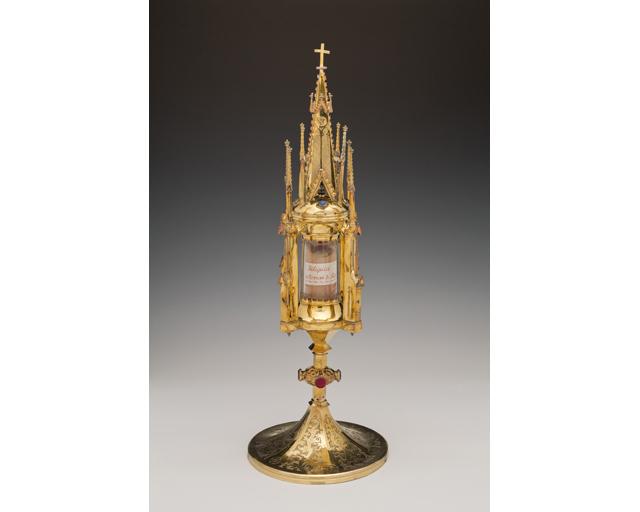As awareness of its prestigiousness spread, which the Hildesheim Cathedral Treasure could claim as its own, both from a historical and artistic point of view, the more urgent it became to find a proper way of presentation. The medieval treasury had long since proven to be too small, and with the dissolution of the Monastery of St. Michael, important parts of the church's treasure were added to the Cathedral Treasury. Even the Cathedral Chapter played a significant part in the treasury becoming too small over time, for example, through targeted holdings acquired from private collections in the course of secularisation and the transfer of individual cathedral furnishings deemed worthy of being displayed in a museum. As a result, the treasures housed in the Cathedral Choir were moved to a newly developed treasury situated above the Sacristy in 1884. From the `regalia´ taken from the Episcopal Church, a separate museum collection was created – exactly the collection of precious treasures to which the Cathedral Treasure should only refer in the future.
In the Second World War, the timely relocation of the Hildesheim Cathedral Treasure saved it from destruction, when the Cathedral's Sacristy was reduced to a pile of rubble on 22 March 1945 during a bomb raid. Starting in 1960, the Cathedral Treasure was once again put on display in its own treasury above the Sacristy. As proof of its rich history, the Cathedral Treasure was made the focus of the central exhibition of the 79th German Catholic Day held in Hanover in 1962. Since 1978 and the time of the museum's re-establishment, it has formed the heart of the Diocesan Museum, in the meantime becoming one with the Hildesheim Cathedral Museum thanks to its inventory of items.
To date, this one-of-a-kind collection of ecclesiastical art has remained significant to the formation of an identity. All made possible through the Cathedral Chapter's goal of repositioning it closer to Episcopal Church and carrying it out as part of the Cathedral's restoration. More than ever before, the Cathedral and Cathedral Museum can be experienced altogether, giving you full and direct access to information about a high medieval church – just one of the main reasons why UNESCO incorporated the Hildesheim Cathedral and its Cathedral Treasure into its list of world heritage sites in 1985.



















